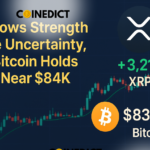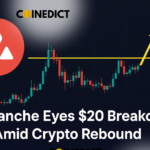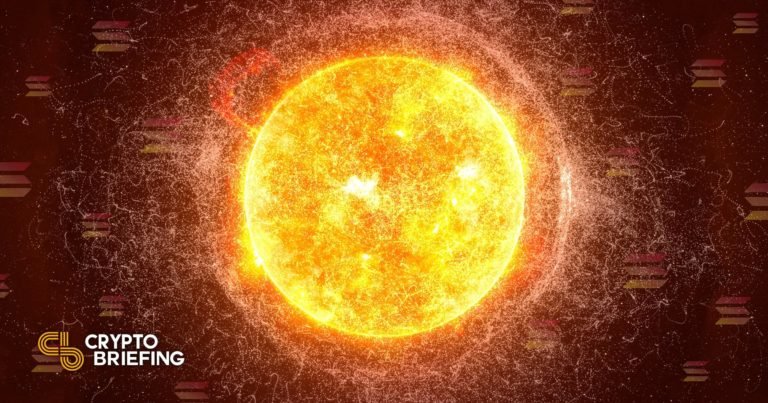
What Is MEV? Ethereum’s Invisible Tax Explained
Key Takeaways MEV stands for “Miner Extractable Value” or “Maximal Extractable Value.” It refers to the extraction of value from Ethereum users by reordering, inserting, and censoring transactions within blocks. MEV is one of Ethereum’s biggest issues, with more than $689 million extracted from users of the network year-to-date. Share this article By leveraging their discretionary power to sequence transactions within blocks, miners can extract value from decentralized application users on Ethereum, greatly diminishing the user experience and threatening the stability of the network. MEV, The Invisible Tax On Ethereum Users MEV is an abbreviation of “Miner Extractable Value” or “Maximal Extractable Value.” It refers to profits that can be made by extracting value from Ethereum users by reordering, inserting or censoring transactions within blocks being produced. It typically affects DeFi users interacting with automated market makers and other apps. Interestingly, the problem of MEV in Ethereum was first identified in 2014—a year before Ethereum launched—by an analyst coder and long-time algorithmic trader operating under the pseudonym Pmcgoohan. Horrified by what happened in 2008 and the outfall of the global financial crisis, when Pmcgoohan first heard about Ethereum and the idea of a programmable blockchain promising distributed and equitable markets, he became enamored. To use his own words, it “blew his mind,” and he was “so excited about it,” but when he looked at Ethereum’s pre-Genesis draft documents, he was taken aback to find a critical flaw. Pcgoohan recognized that miners had total control of the transaction inclusion and ordering process, which meant that they could leverage this power to extract value from unsuspecting users of the protocol went it went live. While some instantly recognized the shortfalls of Ethereum’s proposed design, Pmcgoohan was, unfortunately, ahead of his time, and his warning fell largely on deaf ears. That is until, in 2019, a group of researchers highlighted the issue by publishing a paper called Flash Boys 2.0, where the “MEV” term was first coined to describe the problem Pmcgoohan had referenced years earlier. Subsequently, Georgios Konstantopoulos’ and Dan Robinson’s Ethereum is a Dark Forest, and Samczsun’s Escaping the Dark Forest articles, published in Aug. and Sep. 2020 respectively, cemented MEV as a fundamental concept in crypto-economics and highlighted its importance as one of the most challenging and pressing issues the Ethereum research community faces today. These texts revealed that MEV was not merely a theoretical issue, but a real phenomenon already occurring at a significant scale with concerning consequences for Ethereum users. Why MEV Occurs In Ethereum, miners are responsible for selecting and aggregating transactions into blocks. Crucially, they have full autonomy in deciding which transactions from the mempool—an off-chain space where pending transactions await confirmation—they’ll include in the blocks they mine. As miners, validators, and sequencers optimize for profit, they tend to select and order transactions by the highest gas price or transaction fees. However, the protocol does not require transactions to be ordered according to fees. Miners can leverage their discretionary ability to reorder transactions to extract additional profits from users. This “irregular” stream of revenue is MEV. Although MEV is most frequently associated with miners, it is neither a Proof-of-Work nor an Ethereum-exclusive issue. Moreover, “miner extractable value” is a somewhat misleading term. In reality, the majority of MEV extraction today comes from so-called “searchers”—usually arbitrage traders and bot operators—actively seeking and identifying MEV opportunities on-chain and capturing them in different ways, whereas miners only indirectly profit from these traders’ transaction fees. MEV exists on all smart contract-enabled blockchains with a party responsible for transaction ordering, including validators in Proof-of-Stake-based systems like Ethereum 2.0 and rollup providers on Optimistic Rollups. Understanding the MEV Game The best way to understand the MEV game is to look at it through the lens of the key players, including miners, searchers, users, decentralized applications, and protocol developers. The miners or block producers are responsible for sequencing transactions and deciding which transactions to include in blocks and in what order. Miners can profit from the MEV game in two ways: first, by selling scarce block space to non-miner MEV extractors through so-called Priority Gas Auctions (PGA) in exchange for exorbitant transaction fees, and by capturing MEV directly through reordering, including, or censoring transactions to profit from on-chain liquidation or arbitrage opportunities for themselves. MEV also involves the end-users, such as people taking out on-chain loans or trading on decentralized exchanges. Users are the most exploited party in this game as they emit some amount of value that can be captured by miners and non-miner MEV extractors. Decentralized applications and protocol developers play an auxiliary role. The former create MEV opportunities through their design and the incentives they produce, while the latter establishes the game’s base rules such as giving block producers power to sequence transactions, which is what makes MEV possible. Finally, central to the MEV game are the searchers or the DeFi traders and bot operators who seek to identify MEV opportunities and capture them in different ways. The two primary ways searchers participate in the MEV game are by bidding exorbitant gas prices in on-chain PGAs to have their transactions strategically placed at specific positions within blocks by miners, and by expressing transaction ordering preferences to miners off-chain using novel MEV extraction tools like Flashbots. The Searchers’ Typical MEV Extraction Process Searchers start their MEV journey by monitoring the Ethereum blockchain using bots and automation tools for potential profit extraction opportunities. When they spot an opportunity, searchers analyze the logic behind the trade, conceptualize the attack vector, and create a bundle—one or more transactions grouped and executed in the order they’re provided—designed to materialize its MEV extraction goal when mined. Searchers’ transaction bundles can refer to other users’ pending transactions in the mempool and target specific blocks for inclusion. Once a bundle is created, a searcher will usually send it to a miner using off-chain networks like Flashbots’ MEV-Geth. This allows them to avoid the public transaction pool and express their transaction ordering preferences fast and risk-free (they save on gas…









 Take advantage of our 0% wrapping and service fees. @Cosmos & #Ethereum #DeFi is taking off!
Take advantage of our 0% wrapping and service fees. @Cosmos & #Ethereum #DeFi is taking off! Liquid staking awaits here: https://t.co/ubfqwuGNDr pic.twitter.com/OSMt0UMRKh— pSTAKE Finance (@pStakeFinance) August 21, 2021 Working as a traveling consultant meant the bulk of Aggarwal’s everyday expenses were covered by his employer, giving him ample savings to sock away. “It’s a very Indian and Middle Eastern thing to do — where every penny that you save up, you put into gold or real estate — and that’s what I did,” just as his parents had taught him. Instead of buying apartments, which “have only so much room to grow,” he looked at the bigger, long-term picture and focused on land itself.After selling some property in late 2016, Aggarwal considered new avenues of investment. He first looked into angel investing but soon “came across crypto and basically just went all in.” He says that he was at the right place at the right time, explaining that “crypto was super hot in Singapore” when he invested in 2017, before listing off multiple projects from the time such as Republic Protocol, OmiseGo, and Kyber Network. He was fortunate with his timing, gaining financial independence in only a few short months.“By the end of 2017, I had…
Liquid staking awaits here: https://t.co/ubfqwuGNDr pic.twitter.com/OSMt0UMRKh— pSTAKE Finance (@pStakeFinance) August 21, 2021 Working as a traveling consultant meant the bulk of Aggarwal’s everyday expenses were covered by his employer, giving him ample savings to sock away. “It’s a very Indian and Middle Eastern thing to do — where every penny that you save up, you put into gold or real estate — and that’s what I did,” just as his parents had taught him. Instead of buying apartments, which “have only so much room to grow,” he looked at the bigger, long-term picture and focused on land itself.After selling some property in late 2016, Aggarwal considered new avenues of investment. He first looked into angel investing but soon “came across crypto and basically just went all in.” He says that he was at the right place at the right time, explaining that “crypto was super hot in Singapore” when he invested in 2017, before listing off multiple projects from the time such as Republic Protocol, OmiseGo, and Kyber Network. He was fortunate with his timing, gaining financial independence in only a few short months.“By the end of 2017, I had…








